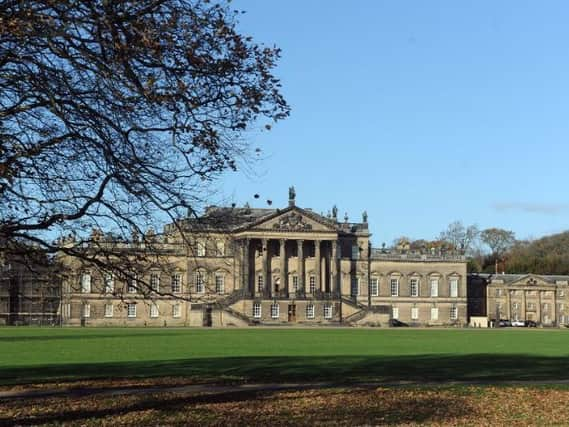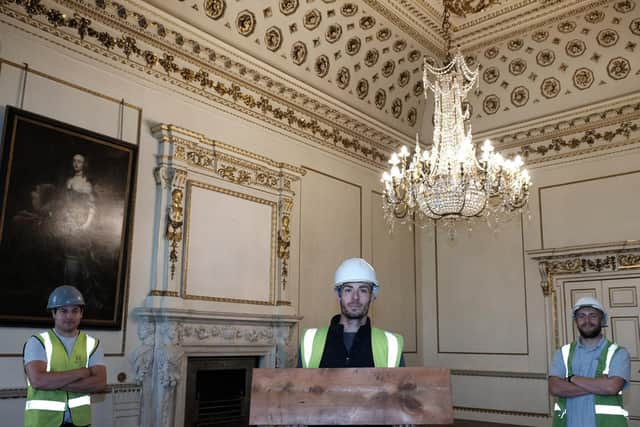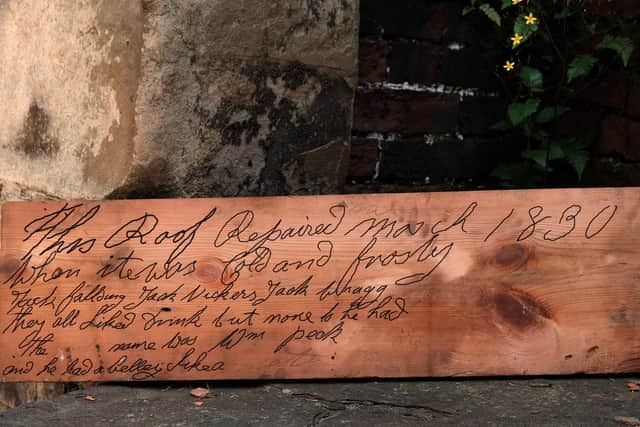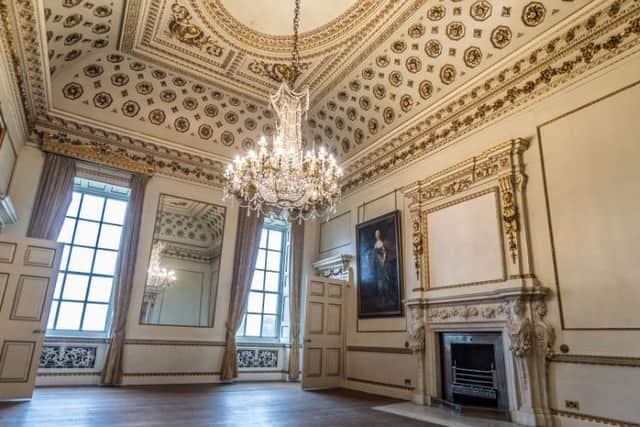Graffiti left by carpenters in 1830 discovered at Wentworth Woodhouse


The amusing epitaph about beer and cold weather was written on a roof timber in one of Wentworth Woodhouse's grandest staterooms by three men - all named Jack - working on it in March 1830.
The young carpenters also use the rhyme - which has been hidden for almost 200 years - to poke fun at their boss, a foreman called William Peake.
Advertisement
Hide AdAdvertisement
Hide AdThey had been hired to repair the roof above the Van Dyck Room, where the fourth Earl Fitzwilliam kept a collection of art that would have been among the most valuable in Britain at the time.


Jack Falding, Jack Vickers and Jack Wragg are thought to have been local tradesmen recruited to work on the ancestral seat of the Fitzwilliam family near Rotherham, which has the largest facade of any private house in the country, seven years before Queen Victoria came to the throne.
Their banterous etchings were uncovered by by their namesake Jack Richmond and his colleague Joe Hutchinson when the two joiners were working on the £5million roof restoration project during lockdown.
Advertisement
Hide AdAdvertisement
Hide AdNow historians at the Grade I-listed mansion are searching for descendants of the three Jacks and William Peake in the hope that they may still live nearby.


Wentworth Woodhouse Preservation Trust facilities manager Julie Readman said:
“We think the three Jacks and William were carpenters and probably local. Since the 1700s many skilled trades people from South Yorkshire worked here.
“Many secretly left their mark in similar style. Since we began major roof repairs in 2018 we’ve found numerous messages and even hand-prints dating back to 1806. It’s really an old form of graffiti.
Advertisement
Hide AdAdvertisement
Hide Ad“It’s fascinating and is enabling us to piece together stories of the people whose skills built and maintained this place.


“We would love to hear from Falding, Vickers,Wragg and Peake families who think they may be descendants. There are also a few vital words we can’t make out in the text and we would welcome any suggestions of what they could be."
The work on the roof is due to finish in November and is vital in ensuring that the trust can realise their vision of opening all areas of the house to the public. There were significant structural issues including damp and dry rot discovered when they bought the house for the nation in 2017.
Site manager Andy Stamford added: “We had to stop work for a few months during the pandemic but are now in the final stretch and I think Wentworth Woodhouse will have a few more examples of craftsmen’s graffiti hidden in the roof structures by the time the scaffolding comes down and we depart.
Advertisement
Hide AdAdvertisement
Hide Ad“It has been a privilege to work on a house as magnificent as this. Incredible skill went into its creation in the 1700s; we are proud to have done our bit to ensure it survives for centuries more.”
If you think you might be a descendant of the carpenters who inscribed the timber, or can help decipher it, contact [email protected].
Wentworth was once one of England's most prominent country houses, and grew in stature as the Fitzwilliam family's wealth from the mines and ironworks near their estate accumulated. In 1912, the Earl hosted a visit by King George V and Queen Mary, who toured the Fitzwilliam collieries.
It went into decline after World War Two, when the eighth Earl died in a plane crash in 1948 without an heir. The direct male line became extinct and the remaining members of the family retreated to a set of apartments inside the house while the remainder, including many of the staterooms, was leased to a ladies' PE teacher training college. They sold the house in the 1980s, although the estate farms and village of Wentworth remain in the ownership of a branch of the family based in Peterborough.
The inscription
Advertisement
Hide AdAdvertisement
Hide Ad‘This roof repaired March 1830 when it was cold and frosty. Jack Falding Jack Vickers Jack Wragg. They all liked drink but none to be had. The - - - - name was William Peake. And he had a belley like a - - - -.'
Comment Guidelines
National World encourages reader discussion on our stories. User feedback, insights and back-and-forth exchanges add a rich layer of context to reporting. Please review our Community Guidelines before commenting.